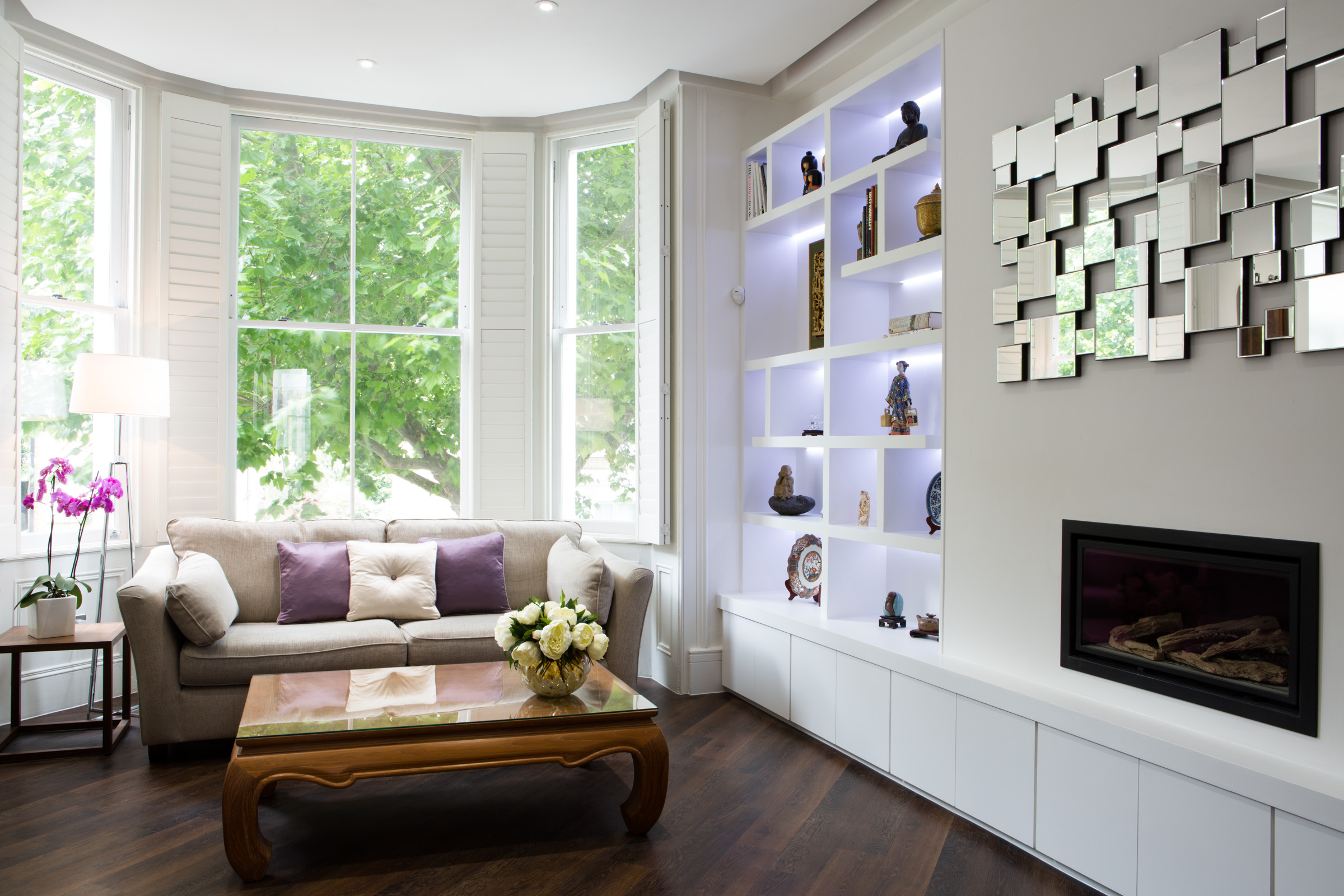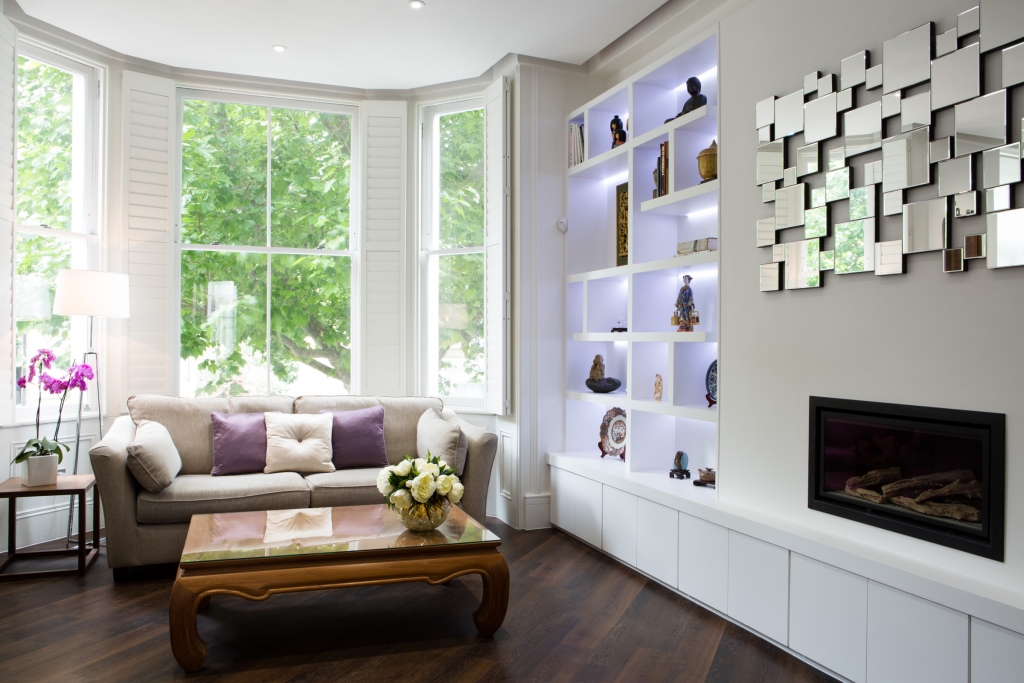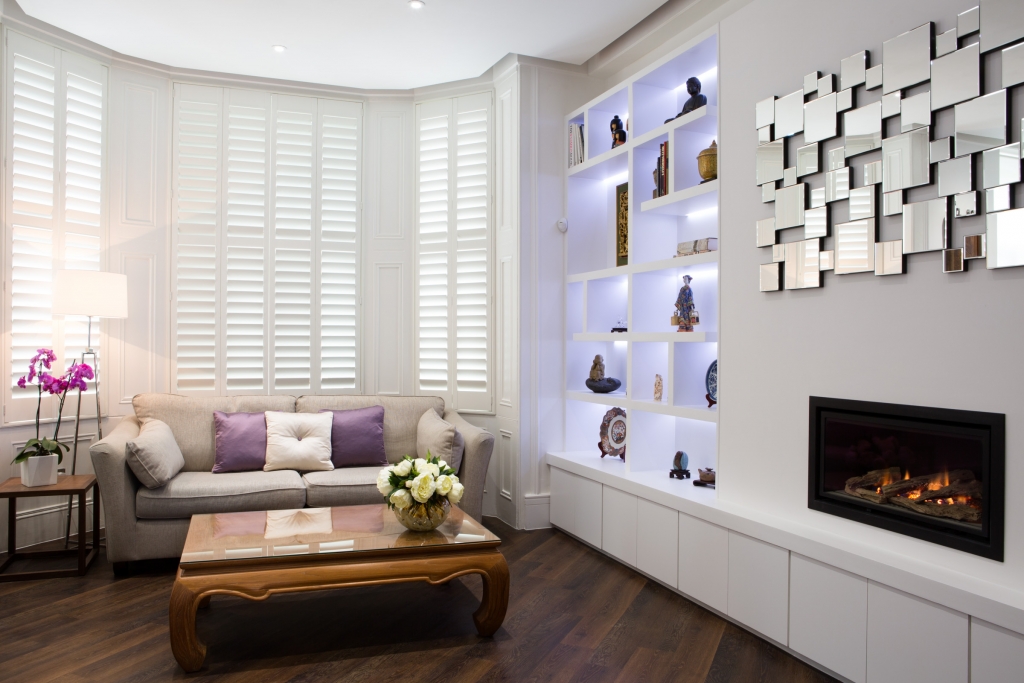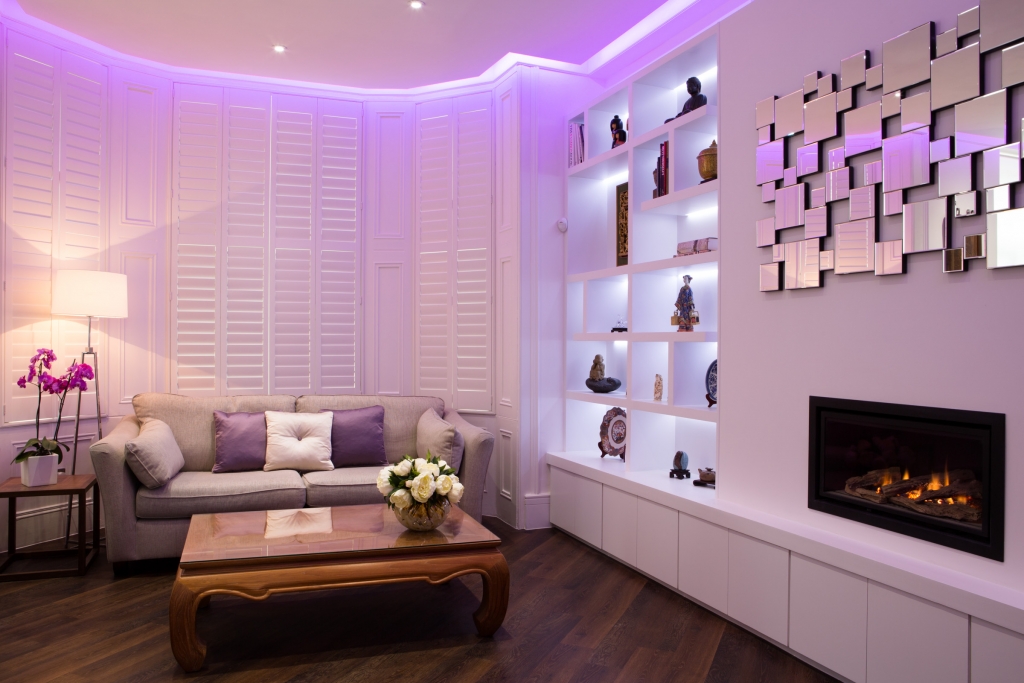I’m working on a project at the moment where my clients are relocating from an open plan living room, with fabulous views over the river Thames, to a country Hertfordshire home with garden views. The London apartment is flooded with gorgeous bright daylight, but the Hertfordshire home has subtle light.
Their instant reaction was to install loads of ceiling spot downlighters but this only gives one type of ‘general’ lighting scheme. It narrows the flexibility to control the lights under different situations and it won’t create the bright ambience they’re looking for.
When modernising any room, you should take into consideration the five levels of lighting. When you have all five levels correctly in your room then it will feel bright and spacious as well as cosy and nurturing.
The 5 levels of lighting are:
- GENERAL LIGHTING: This is the light that is all around you. If you have a north facing room then it may be more subdued than a brighter south facing room.
- SAFETY LIGHTING: To keep your home feeling safe and secure, lighting is introduced at points that might be dangerous or where there are areas of concern. For example, approach lighting for your driveway or by the front door, with additional lights on any stairs or undercounter lights to highlight the kitchen worktop as you prepare food.
- TASK LIGHTING: This is individual lighting to suit your needs and activities throughout the day or night. It could be a reading light in your living room, a night light in a baby’s bedroom or a desk lamp in your office.
- DISPLAY LIGHTING: As the name says, this type of lighting is for when you want to highlight specific items that you have on display. It could be a wall light or a ceiling light to showcase your art, or lighting in a shelf unit to highlight your personal treasures.
- AMBIENT LIGHTING: When you want to create ‘a mood’ then you need background ambient lighting that’s usually soft and romantic. Most of the time you’d use candles but it could also be fairy lights, skirting board or coving lighting, or just putting your lights on a dimmer switch.
Here’s a living room that I designed with a variety of lighting elements:
The first thing you probably notice is the large windows that allow the general light to flood the space. The shutters on the windows are key to this design because they allow as much light into the room as possible. If you have a dark room, you should maximise the amount of general light with window treatments that don’t obstruct the windows. You could choose shutters, eyelet curtains or roman blinds (positioned outside the window recess).
For this design, the shutters provide flexibility because they could all be open or closed, or just the top could be open with the bottom closed. This gives a variety of options to change the lighting levels in the room. At night, when the shutters are closed, a floor lamp was incorporated into the design to provide general light, but it also acts as task lighting for reading and a safety light to move around the room safely. One type of light often has multiple uses.
Around the ceiling, coving lights provide mood lighting to create a different look with colour depending on how you feel. If you don’t want to have the additional expense of changing your coving, there are modern smart bulbs that will give you this same look and feel. The design is complemented with display lighting in the shelves to highlight personal treasures.
The different levels of lighting come together to create a balanced room that caters for both day and night requirements. The room feels bright and spacious as well as cosy and nurturing.
If you’re struggling to create your perfect lighting for your home
then just get in touch.
I’ll create a lighting scheme to ensure your home looks great and feels amazing.
Let’s have a chat about your lighting
Gwendoline Alderton
BIID Interior Designer






Recent Comments